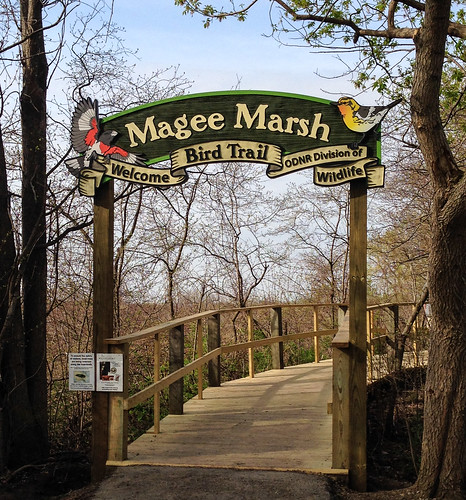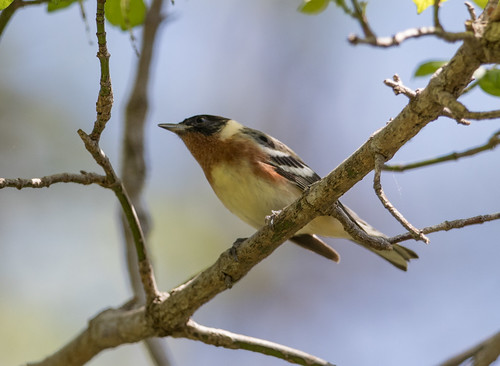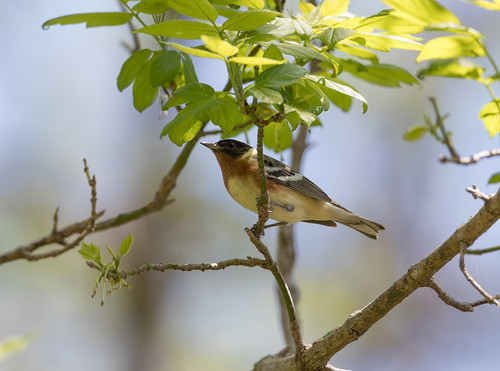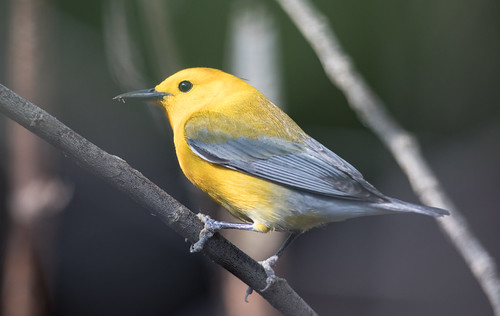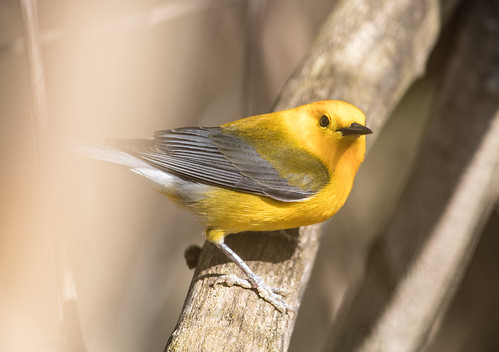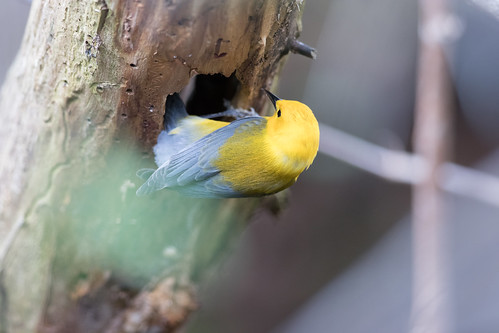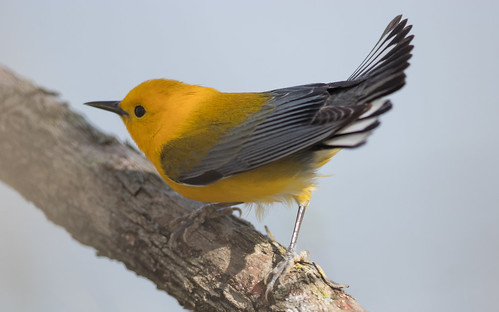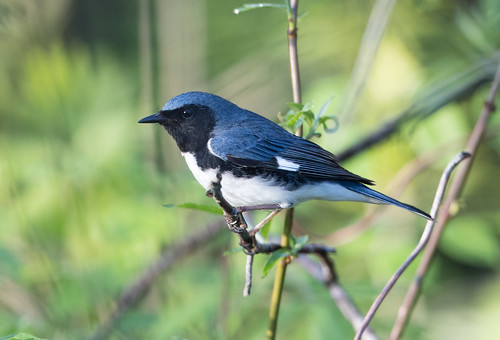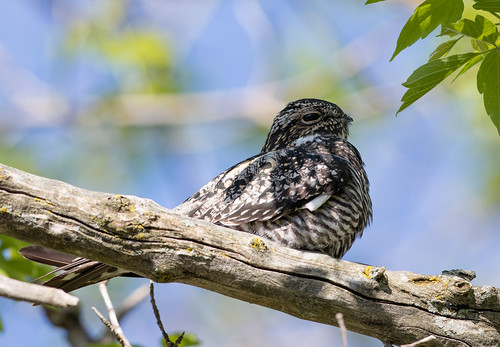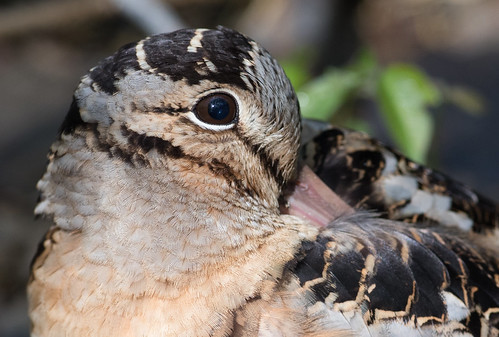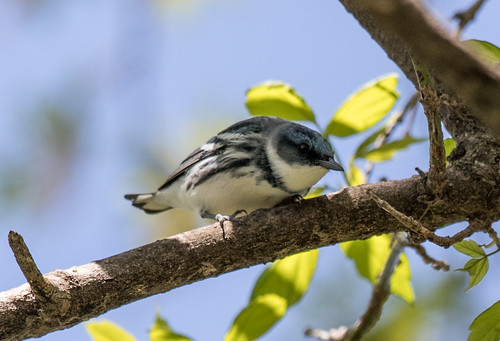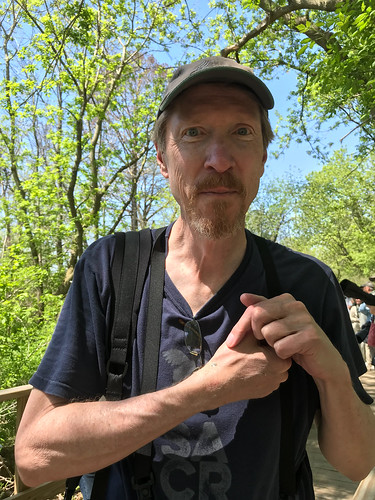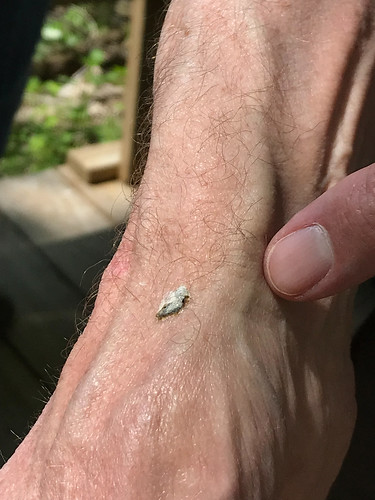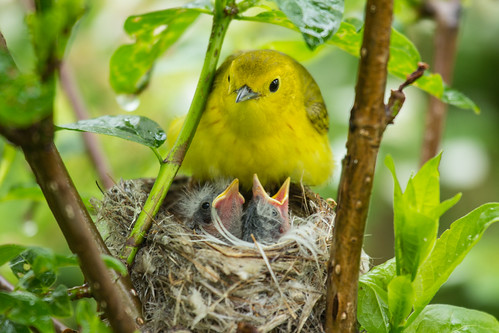Prothonotary Warblers nest right near the Boardwalk that cuts through the marsh, and they gave me lovely photo ops.
I had excellent luck with a Black-throated Blue Warbler.
But my best photo op of all, in terms of the quality of the photos, was of an American Woodcock that was feeding and resting in the mucky wet forest floor just a few feet from the Boardwalk as dozens of people watched and photographed the little guy. The birds living near the Boardwalk get used to the concentration of people and are surprisingly complacent about the hubbub, so I had a grand opportunity to test out a brand new camera lens.
But my favorite shot of all shows him pooping. I guess my days as a junior high teacher affected me more profoundly than I’d suspected. This is the only photo I've ever taken of an unrestrained adult male songbird showing his cloacal protuberance. Obviously, the bird must move the feathers hiding its private parts before pooping, and my photo actually caught this.
Oddly enough, one of my friends, Curt Rawn, just happened to be standing in exactly the right place at the right moment to get splatted by that very poop! My camera EXIF shows the photo was taken at 13:00:58. (Well, it shows 12:00:58, but I had it set on CDT.) My iPhone photos were taken a minute and a half later when Curt got my attention and I got my iPhone set up.
(You can find all my photos of any given species [and their poop if I happen to have a photo] by entering the species name in the Search Birds link at the top of any of my website pages, including this blog.)
Poop shots or no, Magee Marsh is a national treasure of the highest order. It’s a critical stopover spot for many thousands of Neotropical migrants, giving them a safe place to rest and feed during their arduous journey. It’s also a superb place for some species to nest—as I said, a few pairs of Prothonotaries nest there, and it’s the only place I’ve ever found and photographed a Yellow Warbler on her nest at eye level without disturbing her.
One of their challenges has been to deal with cynical representatives of the oil and gas industries, who try to enlist environmentalists to fight against wind power by focusing on the bird kills. Yes, the bird kills, and especially the bat kills, at some wind turbines are unacceptable, but so are the direct bird kills and habitat destruction due to oil, gas, and coal extraction, transport, and refining, to say nothing of the fossil fuel industry's contribution to climate change. Turbines placed along major migration routes, which include most major coastlines and some mountain ranges, and turbines placed in prairie areas where prairie chickens and sage grouse nest, pose a very serious danger for birds. The shores of Lake Erie have long been known to serve as a migratory magnet and stopover, and so Black Swamp Bird Observatory Director Kimberly Kaufman has led the fight against wind farms along that specific shoreline, while carefully keeping the focus not on wind power itself but where it belongs, on turbine design and siting. There are places where wind farms kill very few birds, where they can be justified even as we work to develop turbine designs that don't kill our precious wildlife anywhere.
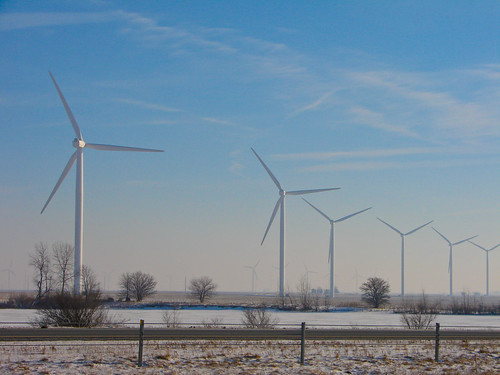 |
| Clean energy produced in Indiana farm country, at least minimizing potential bird kills. |
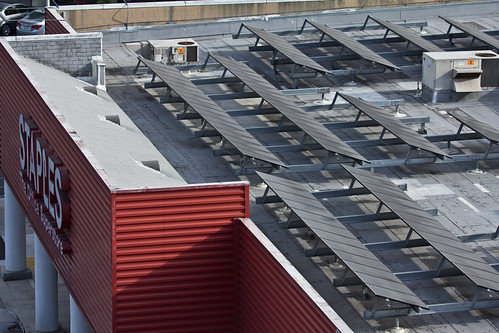 |
| Clean energy produced where it is used, in cities. |
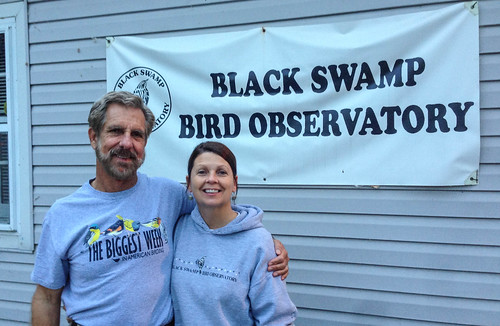 |
| Kimberly Kaufman and her husband Kenn, both working tirelessly to promote birds and their conservation. |
